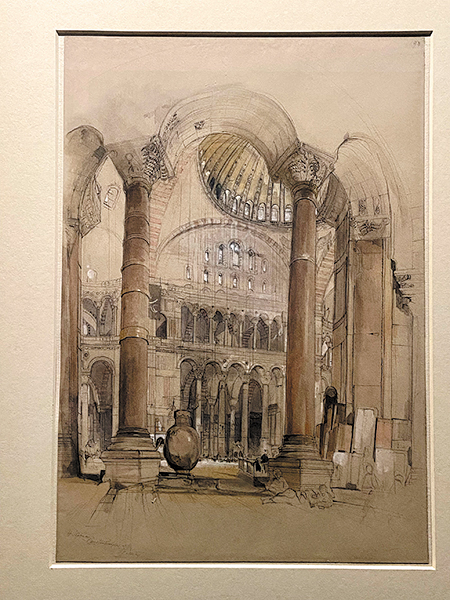

Demographic features
The growth of the middle — and working-class populations during this period meant they increasingly served as the subjects of art — beforehand, most works depicted religious figures, fairy-tale characters, royalty and aristocracy.
Paintings on show portray idealized lifestyles, and the underlying social rules and moral values, promoted by the middle class — a house in the suburbs; a quiet and virtuous wife; and adorable and well-behaved children.
Women in these affluent families are often portrayed as enjoying leisure, while leaving domestic chores and child care to servants. But they were legally and financially dependent on men.
A telling example of this on show is George Goodwin Kilburne's Poor Relations.
It shows a narrative scene in which a woman expresses resignation as she holds her face with one hand while her unhappy looking husband gives cash to her father following the death of her sister's husband.
The situation was, indeed, dire for the poor. The working class' struggles are depicted not only through paintings but also such arts and crafts as a necklace on display that's made using gold and human hair. Back then, women who lived in poverty often sold their hair.
Such jewelry was worn by wealthy elites, who decorated their living spaces with crafts from around the world, sometimes including Chinese porcelain. The exhibition shows patterned porcelain dating back to the 18th and 19th centuries from Jingdezhen in today's Jiangxi province — arguably the material's leading production center then.
"These works show not only the cultural diversity of 19th-century Britain but also many other aspects of society and the lives led by different classes that offer audiences a panoramic view of the Victorian age," Li says.